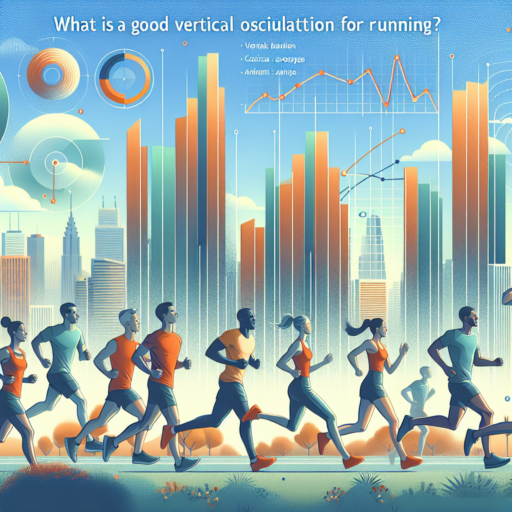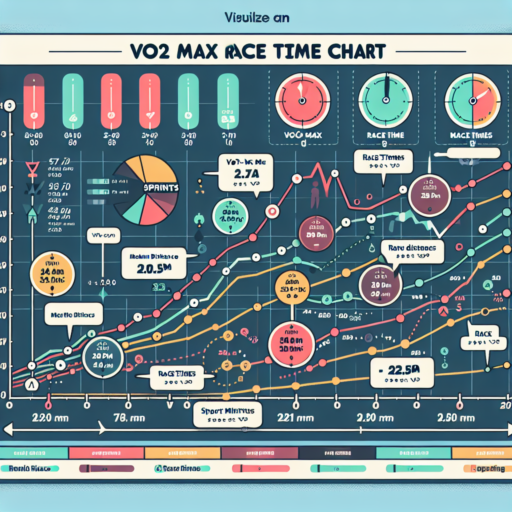What should your vertical oscillation be while running?
Understanding your vertical oscillation, the bounce in your step as you run, can profoundly impact your running efficiency and injury prevention. Ideally, your vertical oscillation should be minimal, allowing for a smoother, more energy-efficient running form. This metric is crucial for both novice and experienced runners looking to optimize their performance.
Optimal Range for Vertical Oscillation
When considering the optimal range for vertical oscillation, experts suggest aiming for 6-8cm. This range suggests a balanced approach to stride efficiency, minimizing airborne time without compromising stride length. Keeping within this suggested range ensures that energy is utilized more horizontally than vertically, translating into faster and more efficient running.
Techniques to Reduce Vertical Oscillation
Improving your running form to reduce vertical oscillation focuses on a few key aspects. Firstly, increasing your cadence (steps per minute) without necessarily increasing your speed encourages less bounce. Secondly, strengthening your core and glutes supports better postural alignment and stability, which naturally decreases unnecessary vertical movement. Lastly, mindful running—consciously focusing on running ‘lightly’—can make a significant difference in how much you bounce with each step.
By understanding and adjusting your vertical oscillation, you are taking a crucial step towards a more efficient and safer running technique. Keep these tips in mind during your training sessions to improve your running economy and reduce the risk of injury.
No se han encontrado productos.
What is a good vertical ratio percentage running?
In the world of running, the vertical ratio (VR) is a key metric that provides insights into a runner’s efficiency and technique. It measures the relationship between the vertical oscillation (the amount of «bounce» in a runner’s step) and the total stride length, offering a percentage that reflects the vertical component of a run. Understanding the nuances of this metric can significantly impact a runner’s performance and injury prevention strategies.
A good vertical ratio percentage typically falls within a narrowly defined range. For most elite runners, the VR hovers around 7% to 9%. However, it’s important to note that while striving for an optimal VR, individuals should consider their personal running mechanics and physical attributes. A VR higher than 10% suggests excessive vertical movement, which can lead to inefficient running and increased risk of injury. Conversely, a VR lower than 7% may indicate a need for increased power in each stride to improve performance.
To efficiently monitor and adjust your running technique for an ideal VR, incorporating specific exercises aimed at strengthening the core and lower body can be beneficial. Additionally, regular analysis of your running form, either through professional coaching or video analysis tools, can help identify any deviations from the optimal range and guide targeted interventions. Remember, improving your VR is a journey that involves continuous refinement of your running mechanics.
Is high vertical oscillation bad?
When discussing running efficiency and injury prevention, the topic of vertical oscillation often comes to the forefront. Vertical oscillation refers to the bounce in a runner’s step; it measures how much a runner moves up and down with each stride. Understanding the implications of high vertical oscillation is crucial for athletes aiming to optimize their performance and reduce the risk of injuries.
High vertical oscillation can be indicative of inefficient running form. Runners with excessive upward movement tend to expend more energy, as they are not directing all their force forward. This inefficiency could lead to quicker fatigue, potentially affecting performance in the long run. Moreover, the extra energy used to propel oneself vertically increases the overall effort needed for running, which might not be sustainable over longer distances.
Furthermore, a higher vertical oscillation is often associated with increased landing impact. This can put additional stress on the joints, particularly on the knees and ankles, which might lead to overuse injuries if not addressed properly. It’s imperative for runners to monitor their running mechanics and strive for an optimal balance in their stride to mitigate these risks.
How can I improve my vertical oscillation?
Improving your vertical oscillation is crucial for enhancing your running efficiency and reducing the risk of injuries. Vertical oscillation refers to the amount of «bounce» in your running motion. A lower vertical oscillation indicates a more efficient stride, leading to improved running economy and performance. In this section, we’ll explore effective strategies to minimize your vertical oscillation and boost your running technique.
Focus on Your Running Form
One of the key factors in reducing vertical oscillation is to focus on improving your running form. Aim for a quick cadence, approximately 180 steps per minute, and try to land softly with your foot beneath your body. This helps in minimizing excessive vertical movement and promotes a more efficient stride. Additionally, keep your posture upright and engage your core to maintain stability, which directly impacts your oscillation.
Incorporate Strength Training
Strength training plays a pivotal role in lowering vertical oscillation. Exercises focusing on your lower body and core can significantly improve your running form. Squats, lunges, and deadlifts enhance leg strength, supporting a more powerful push-off with each step, which decreases unnecessary vertical motion. Core exercises, such as planks and Russian twists, improve your stability and control, effectively reducing your bounce.
Utilize Feedback Tools
Leverage technology to get feedback on your vertical oscillation. Various running watches and performance trackers can measure your vertical oscillation in real-time, providing insights into your running mechanics. By monitoring these metrics, you can make immediate adjustments to your form, like altering your cadence or focusing on a smoother stride. Regularly assessing your running data allows you to track your progress over time and pinpoint areas for improvement.
By concentrating on these strategies, runners can achieve a more efficient and injury-free running experience.




